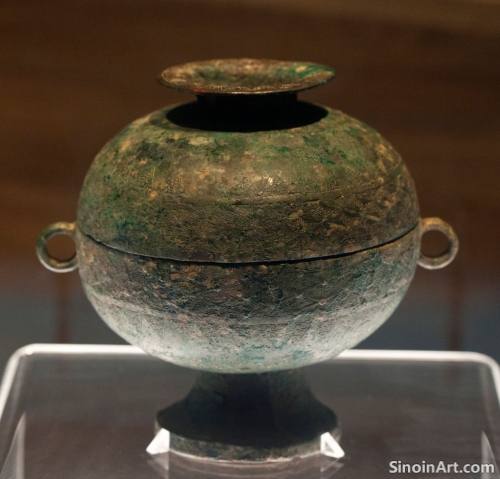The Use of Bronze in Ancient Chinese Ritual Masks: Power, Transformation, and the Spirit World
|
Bronze masks in ancient China, often featuring dramatic and stylized depictions of faces, creatures, or deities, were powerful ritual objects, used in ceremonies and performances to invoke the presence of spiritual forces, to embody ancestral spirits, and to facilitate transformative experiences. These objects were designed to emphasize the power of the spirit world and to call it into the realm of the living.  These masks often featured exaggerated features, including large eyes, prominent teeth, and elaborate headdresses, all designed to create a powerful visual impact and to suggest that these entities were not of the human world. The visual design was intended to create an otherworldly and striking impression. These dramatic features enhanced the transformative and spiritual nature of these objects.  The act of wearing a bronze mask was believed to be a powerful means of connecting with the spirit world, and sometimes even to embody the persona of a deity or ancestor. These masks helped to allow individuals to connect with forces beyond the everyday world. The performance and the masks were deeply intertwined with the ancient Chinese understanding of magic and ritual.  The use of bronze masks in ritual contexts highlights the importance of both visual and symbolic communication in ancient Chinese religious practices. These pieces were meant to be seen, as well as to be used to invoke a spiritual presence. The visual and symbolic elements were essential aspects of the overall experience. The study of bronze masks in ancient Chinese rituals helps to reveal the complex interplay between material culture, religious beliefs, and transformative experiences. The power and beauty of these objects continues to fascinate and inspire many to this day. They offer a powerful glimpse into ancient spiritual beliefs. |
Tag : bronze ritual masks, ancient Chinese magic, spirit world, ritual performance, deity depictions
Related information
- The Use of Bronze in Ancient Chinese Warfare Technology: Beyond Weapons
- The Role of Animal Motifs in Chinese Bronze Ware: Symbolic Creatures of Power and Mystery
- Beyond Vessels: The Diverse Uses of Bronze in Ancient China
- Bronze Ware and the Development of Chinese Writing: An Intertwined History
- The Modern Use of Chinese Bronze Ware: Reinterpretations and Artistic Influence
This article explores the use of bronze in ancient Chinese warfare technology beyond weapons, highlighting its role in creating chariot fittings, siege engine components, and protective armor, showcasing the technological sophistication of the era.
This article explores the animal motifs found on Chinese bronze ware, highlighting the symbolism of creatures like the taotie, dragons, phoenixes, and tigers, revealing their use in conveying power, spirituality, and connections to the natural world.
This article explores the diverse uses of bronze beyond vessels and weapons, highlighting its use in musical instruments, mirrors, tools, and other objects, demonstrating the versatility and importance of bronze in ancient Chinese society.
This article explores the intertwined history of bronze ware and the development of Chinese writing, highlighting the earliest forms of writing on bronze, the evolution of script styles, and the role of inscriptions in preserving history and culture.
This article explores the modern use of Chinese bronze ware, highlighting how contemporary artists and designers reinterpret and adapt its forms and motifs, blending ancient traditions with modern aesthetics, showcasing the enduring influence of these powerful works.